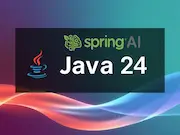Introduction
Java, as a platform-independent programming language, has been supported by various JVMs (Java Virtual Machines) since its inception. The JVM is a virtual machine that executes the compiled code (bytecode) of Java programs. Today, in addition to standard JVMs, many custom JVMs have been developed. This article will specifically focus on the innovations brought by GraalVM and compare it with other JVMs.
What is JVM?
The JVM is the runtime environment for running Java programs. Java's core principle, "Write once, run anywhere," is made possible by the JVM. It takes the bytecode and translates it into executable machine code.
Key Components of JVM:
- Class Loader: Loads Java classes.
- Bytecode Verifier: Ensures the security and integrity of the code.
- Execution Engine: Translates bytecode into executable machine code.
- Interpreter: Executes the code line by line.
- JIT Compiler (Just-In-Time): Optimizes and compiles the code into machine code during runtime.
Popular JVM implementations:
- HotSpot JVM (Oracle/AdoptOpenJDK)
- OpenJ9 (Developed by IBM)
- Zulu JVM (From Azul Systems)
What is GraalVM?
GraalVM is a JVM developed by Oracle, offering many innovations compared to other JVMs. It is a versatile runtime that supports not only Java but also a variety of other programming languages.
Key Features of GraalVM:
Polyglot Support:
- GraalVM can execute not only Java but also Python, Ruby, JavaScript, R, and even C/C++.
High Performance:
- GraalVM uses an optimized version of the JIT compiler to execute code faster.
- AOT (Ahead-of-Time) Compilation allows code to be compiled into machine code before execution, especially used with the Native Image feature.
Native Image:
- Converts Java applications into standalone executables with fast startup times and low memory consumption.
Integration:
- Easily integrates with the existing JVM ecosystem and is compatible with other JVMs.



